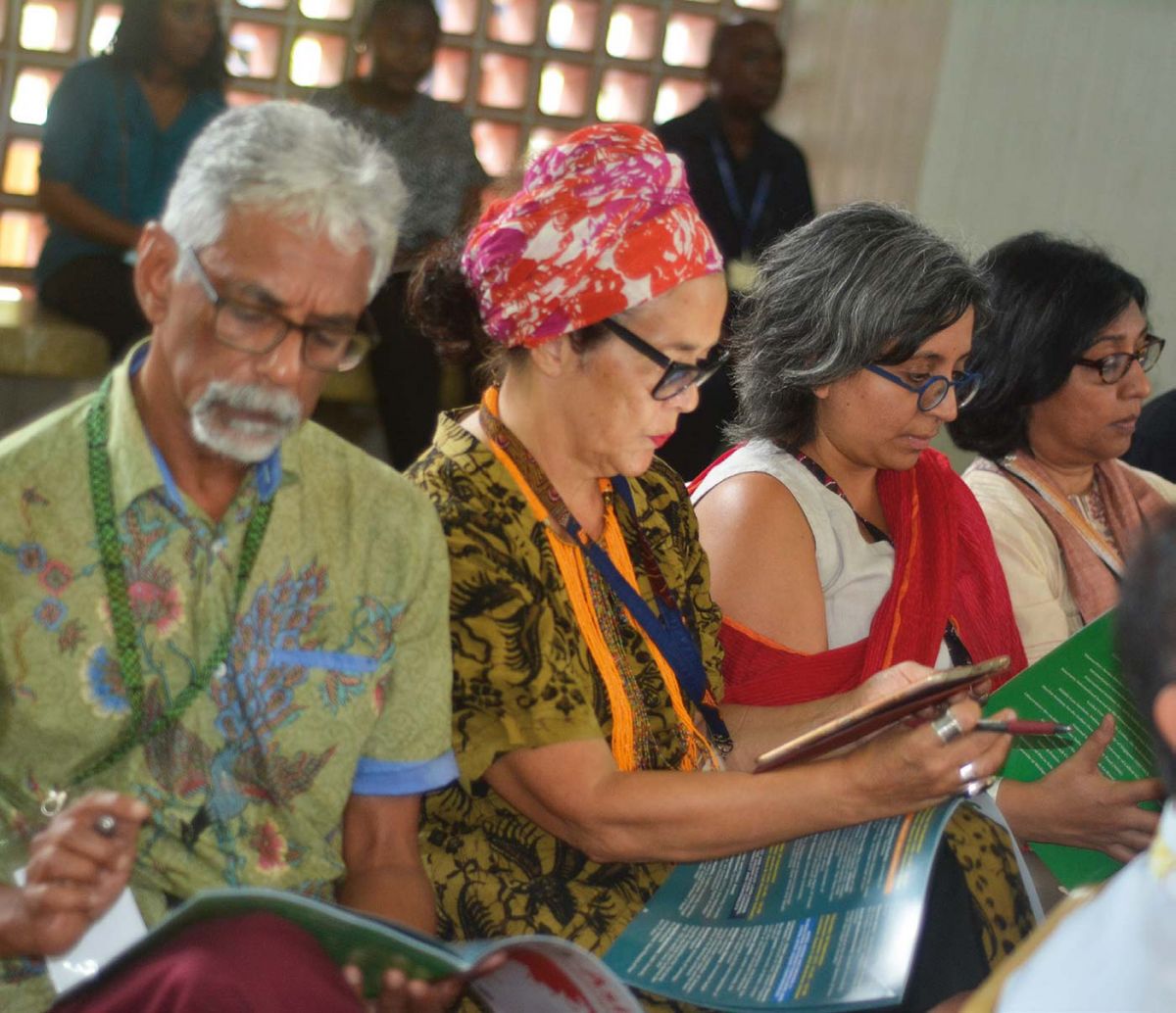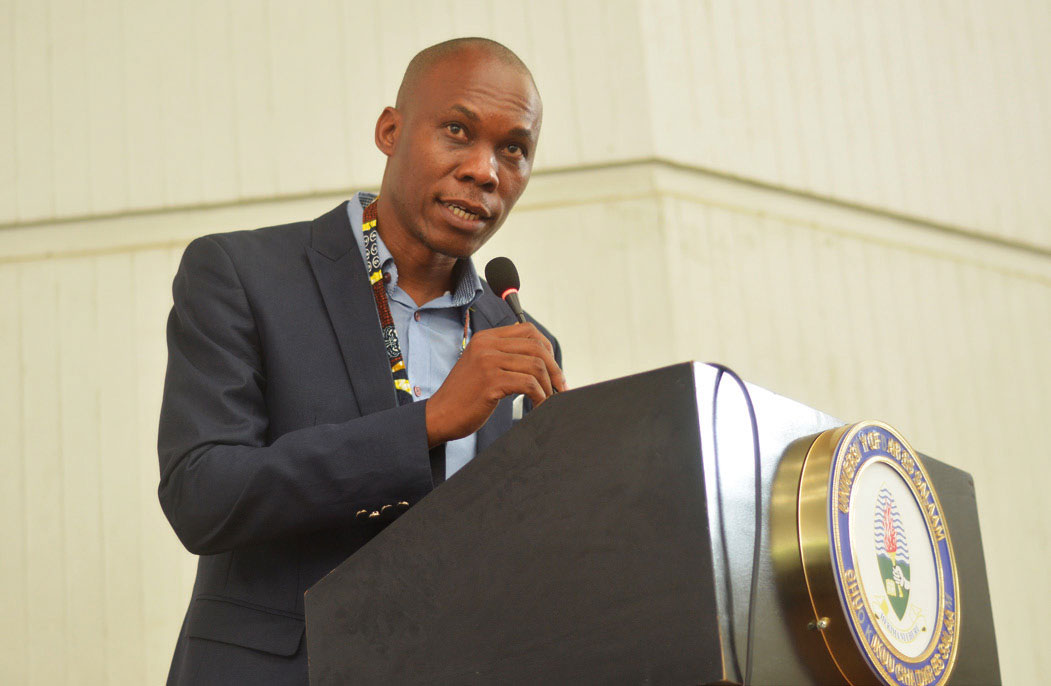Africa-Asia: a 'New Axis of Knowledge', to what effect?
As a student of international relations, I am not sure if an Africa-Asia axis is necessarily innocent intellectually, politically or historically. However, one thing I am learning in my research and from having attended the second Africa-Asia Conference is that the connection is one that is productive, in the sense that it creates anew, if not substantially then at least aesthetically, and the latter is not entirely nothing. I am happy I found co-journeyers at the conference that share the view that Africa-Asia provides a new axis for creativity that, while indeed never innocent, can be political without merely serving as a plot point in politics if the axis works through disrupting established habits, rituals, networks, modes, parameters of knowledge production and what knowing is and does in the world(s). For this disruption to be more than a rhetorical gesture, working to re-inhabit and redeploy the limits of conferencing, collaboration and knowledge production at a minimum is imperative.
I first learned about the conference though its first instalment in Ghana in 2015, when I was lost and was Googling for some grounding for an entry into Asia and Africa linkages for my research on North Korea and postcolonial theory. Following through the conclusions of my first book on re-imagining North Korea in international politics, I was working on North Korean art and aesthetic theory as a way to open up the predictably dictatorial and problematic way North Korean politics manifest that feed into the hierarchic international order. Art and taking North Korean sources on their own terms did not seem enough in my effort to reconfigure how ‘North Korea’ and ‘state politics’ converge, and in this context, North Korea’s Third World cultural activities in Asia and Africa seemed promising. ‘Trained’ in International Relations, Cultural Studies and Korean Studies, I had very little knowledge of anything African, and I had learned nothing about the Bandung Conference, the Non-aligned Movement, or inter-continental liberation linkages, as part of my training or in previous research. I was reading up on the topic on my own so when I stumbled upon the proceedings of the first Africa-Asia Conference online, this was exciting.
Besides curiosity about the research papers at the conference (because these papers were not published), I wanted to know about its politics. It was hard to tell what brought the organizing members together, what linked these people and their institutions to the project, what the political/ideological angle was in this inaugural meeting. Big western institution presence was noticeable, but did this mean they were the driving force? Did they pick their ‘African’ counterparts/local organisers? How do these inter-regional collaborations get off the ground? Is this a counter initiative to some other debates or developments I am not able to read in the public-facing self-presentation?
When the announcement for the second Africa-Asia Conference was made, I felt that I had to go see for myself (by then, I had secured a research fellowship with travel funds from also a Western/American source). Some of my structural questions were answered – it helped that there were many panel sessions to discuss the procedural, strategic and pragmatic aspects of how to nurture the axis, more so than one would expect from a medium sized conference. I am sure these discussions also happened behind closed doors, over dinner and drinks with key actors and stakeholders, but the discussions and reflections were also abundant within the conference proceedings. I found this inclusivity and transparency refreshing; it brought to the fore how research findings do not spring from a vacuum, that it is important to bring into research spaces the machineries of what sustains the gathering, but also the aspirations, what is at stake and concerns of the institution-in-the-making. For instance, the conference’s local convener, Dr Mathew Senga of University of Dar es Salaam, stressed the importance of ensuring the conference and network not reproduce existing models of Asian Studies centres elsewhere, but claimed that they (we?) were about creating Africa-Asia centres. This hyphen is a significant difference from the European models that make its location invisible while all the while resting on the currency of Europe/West to make their work and reach possible. Others recounted the discords at the Ghana conference and the unresolved financial aspects of this ambitious enterprise, which it turns out is also a shoestring enterprise despite big institutional names attached. I got a sense in various conversations that theoretico-political discord (or ideological differences in old school terms) was seen as something to be put aside, because it divides and stalls rather than allows for action, planning, forging.
Indeed, the Bandung Conference that brought together Asian and African political leaders in 1953 was invoked at the conference opening ceremony and during the rest of the conference proceedings. This was interesting at first, but upon hearing it on repeat, I realized that of course I should have known this would be the theme: building on heroic legacies to forge new relations is a common practice. Oddly, it was not during research panels on such historic events or linkages where I saw critical engagements with the optimism about Afro-Asia as an axis and claims to the continuity of Bandung to this initiative; surprisingly, it was in a roundtable titled ‘Toward resilient societies: comparison and cooperation across regional borders?’ where Itty Abraham, a leading international relations researcher on this topic (NUS, Singapore), reminded us how the historic event of Bandung was also fraught with misunderstandings and viability. But what I appreciated most about this roundtable discussion was less the well-considered academic insight on why Africa-Asia relations are not innocent, and more the presentation by the only woman on the esteemed panel, and the only non-academic, Zaida Mgalla (Uwezo Tanzania). Madame Mgalla bellowed her world into the room, first slowly like she was presenting in a classroom, focusing on the meticulous and trivial, and then slowly in her own way explaining how the literacy programme works, in the Tanzanian and East African context, with global implications. The chair gave her extra time, the room first seemed unsure, but with time her optimism about the international collaboration and new initiatives trumped the well-considered academic concerns on the panel. It wasn’t the specificities of her argument, but the unexpected juxtapositions of positions, aspirations, and level of thinking that energized the room. I learned a lot about broader aspects of how ideas move, analytics fail, disruptions occur. I appreciated the ethos of the unexpected that seemed to structure some of the sessions at the conference, again more plentiful than one would expect for a conference of this size.
One final observation. Reverberating in the many sessions was the question of inequity in resources along continental lines to do the very work that brings us together – research. We cannot increase the axis of knowledge by simply inviting more diverse participants to present their papers through income-calibrated conference fees or even by funding conference travel expenses on a needs basis. These do help and they are a must, but what I saw was that at a minimum, we have to rethink how conference sessions are structured so that we do not assume that all researchers have the same resources (not just funds, but also time) to do the kind of research they want to be doing and how they want to contribute to knowledge production as researchers. If ‘the best’ presentations and research findings are those coming from the well-resourced universities, what kind of intellectual conversation is possible across various axes of differences? Short of longing for a more equal global world, what must we do, at minimum, to create conference meetings of radical equality and exchange? How do we fail Africa-Asia as a new axis of knowledge when we do not experiment with how we come together, how we share resource, how we listen, invite, create spaces for new entrants to Africa-Asia studies?
The more I navigate this terrain, the more I sense that Africa-Asia is less about connection and more about discord, impossibility, artifice. In short, the Africa-Asia axis is actually about how difficult it is to establish, because of the history of colonialism, imperialism, raced hierarchies, capitalism, exploitation, parochialism, etc. Further, in this context, it is even harder to forge relations alone with no real network or solid academic grounding to do this work, but only with a faint notion that I follow a politics of going beyond the colonial and thus predictable linkages (e.g., francophone is a French colonial connection so linking Cambodia or Vietnam with Senegal or ‘Africa’ would be following colonial linkages). In short, it is not surprising that research in this terrain is difficult, fraught, and often just weird. Whatever those with institutional backing and depth of knowledge to use in support of one’s vision/belief, this Asia-Africa, or Africa-Asia thing hits many walls of sanity and reason, and training. I think it is important to embrace the insanity of this project. Funding permitting, see you all at the third instalment!
Shine Choi is a lecturer in Politics and International Relations, Massey University, New Zealand. She is also Associate Editor of the International Feminist Journal of Politics.

